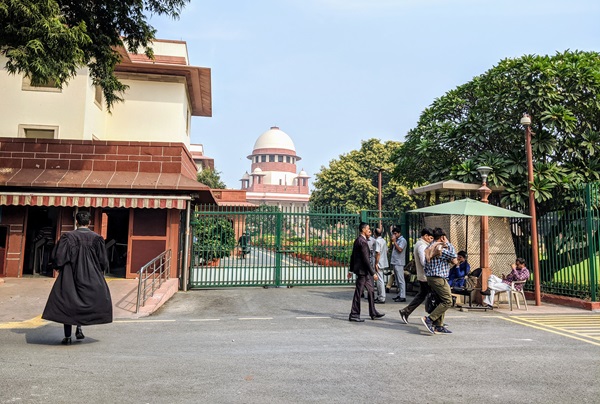.png)
Eight Years, Many Judgements Later Bhushan Power Stays with JSW
A Supreme Court verdict upholds JSW Steel’s acquisition of BPSL, resolving years of disputes, bolstering faith in India’s insolvency law.

September 26, 2025 at 1:41 PM IST
The Supreme Court today dismissed the appeals challenging the resolution plan for The Bhushan Power & Steel Limited under the Insolvency and Bankruptcy Code, upholding the orders of the NCLT and NCLAT. In its ruling, the Court reiterated that once a resolution plan—in this case by JSW Steel—is approved by the Committee of Creditors and confirmed by the adjudicating authority, it becomes binding on all stakeholders, including government authorities.
Emphasising that courts cannot interfere with the commercial wisdom of creditors, the bench closed the matter and affirmed that the approved plan must now be implemented without further challenge.
The case involved the interplay of multiple regulators, investigative agencies, and courts, and brought into sharp focus the question of how resolution applicants can take control of assets when fraud and money-laundering proceedings run parallel. It has spanned eight years, several rounds of litigation, and repeated interventions by the Supreme Court. Below is a detailed timeline of the journey.
2017 – The Beginning: RBI’s Dirty Dozen and Admission of Insolvency
- May 4, 2017 – The Government of India amended the Banking Regulation Act, giving the Reserve Bank of India powers to direct banks to initiate insolvency proceedings against large defaulters.
- June 13, 2017 – Acting under this new power, RBI identified 12 major accounts—dubbed the “dirty dozen”—that together accounted for about 25% of total non-performing assets. BPSL was among these.
- July 26, 2017 – Punjab National Bank, a lead creditor to BPSL, filed an application under Section 7 of the IBC. The National Company Law Tribunal, Principal Bench at Delhi, admitted the petition, marking the commencement of the Corporate Insolvency Resolution Process. An Interim Resolution Professional was appointed, who later became the confirmed Resolution Professional after approval by the Committee of Creditors.
This set the stage for one of the most closely watched insolvency cases under the IBC framework.
2018 – Resolution Plan and Approval by CoC
- September 1, 2017 onwards – The CoC, consisting of the major lenders, began deliberations. Several potential resolution applicants expressed interest.
- October 3, 2018 – JSW Steel, one of India’s largest steel companies, submitted a Consolidated Resolution Plan for BPSL. The plan envisaged taking over the company, infusing funds, and repaying creditors at significant haircuts.
- October 10, 2018 – After discussions, the CoC approved JSW’s plan with the requisite majority, declaring JSW Steel as the Successful Resolution Applicant.
The approval was seen as a milestone in the IBC framework, as it promised to rescue a large steel asset and bring it under the control of an established player.
2019 – Investigations by ED and NCLT Approval
- February 14, 2019 – The RP filed an application before NCLT for approval of JSW’s resolution plan.
- April 25, 2019 – The Enforcement Directorate registered a case under the Prevention of Money Laundering Act based on a CBI FIR alleging fraud and siphoning of funds by BPSL’s promoters.
- September 5, 2019 – NCLT approved JSW’s plan, subject to certain conditions. The order paved the way for implementation.
- October 10, 2019 – In a dramatic turn, ED issued a Provisional Attachment Order, freezing BPSL’s assets worth thousands of crores, citing proceeds of crime.
- October 14, 2019 – NCLAT stayed both the implementation of the resolution plan and ED’s attachment, creating an unusual deadlock.
This period highlighted the tension between insolvency resolution under IBC and the fight against financial crimes under PMLA.
2020 – Supreme Court Steps In
- December 18, 2019 – The Supreme Court intervened and stayed ED’s attachment, allowing proceedings to move forward.
- February 17, 2020 – NCLAT approved JSW’s plan with modifications.
- March 6, 2020 – The Supreme Court admitted appeals against NCLAT’s decision. It also recorded an undertaking from the CoC that if the appeals succeeded, the money paid by JSW could be returned.
The undertakings ensured that JSW could take steps without losing money irretrievably if subsequent orders went against it.
2024 – ED Directed to Hand Over Assets
The case moved slowly through the courts over the next few years.
- December 11, 2024 – The Supreme Court ordered ED to hand over the attached assets of BPSL to JSW Steel. This was seen as a victory for the resolution process under IBC, but questions lingered about the extent of fraud committed by the promoters and the sanctity of the attached properties.
2025 – Liquidation, Review, and Recall
- May 2, 2025 – In a stunning reversal, the Supreme Court quashed the NCLT and NCLAT orders of 2019 and 2020 that had approved JSW’s plan. The Court held that the plan could not stand in view of the fraud and the extent of siphoned funds. It rejected the resolution plan outright and directed liquidation of BPSL.
- This order created shockwaves, not just for BPSL but for the entire IBC framework, as it raised the possibility that resolution applicants could lose assets after years of litigation.
- July 29, 2025 – The Supreme Court issued notice in review petitions filed against its May order. In an unusual step, it allowed an open court hearing of the review petitions, indicating the seriousness of the issues involved.
- July 31, 2025 – The Supreme Court recalled its May 2, 2025 judgment. The review petitions were allowed, and the appeals were reopened for a full hearing.
This was an extraordinary move, as recall of a Supreme Court judgment in IBC matters is rare.
August 2025 – Fresh Hearing
- August 7, 2025 – The appeals were listed for fresh hearing.
- August 11, 2025 – After intensive hearings, the Supreme Court reserved its judgment.
September 26, 2025 – Final Judgment
- The resolution plan approved under the Insolvency and Bankruptcy Code was valid and binding.
- The challenges raised by the appellants did not merit interference.
- Once a resolution plan is approved by the CoC and confirmed by NCLT, it binds all stakeholders, including government authorities, and courts should not reopen commercial wisdom of the CoC.
Significance of the Case
- IBC vs PMLA Conflict – The case highlighted the tension between resolution of stressed assets under IBC and action against financial crimes under PMLA. The question was whether attached assets could still be transferred to a resolution applicant.
- Resolution Applicant Protection – JSW Steel, as the resolution applicant, sought protection under Section 32A of IBC, which insulates new management from past criminal liability. The case tested the strength of this protection.
- Judicial Consistency – With repeated interventions and reversals, the case illustrated the difficulties courts face in balancing recovery for creditors, punishment for wrongdoing, and continuity of business operations.
- Investor Confidence – For foreign and domestic investors, the long and uncertain journey of BPSL’s resolution became a cautionary tale. A clear and stable framework is critical if large companies are to be rescued under IBC.



